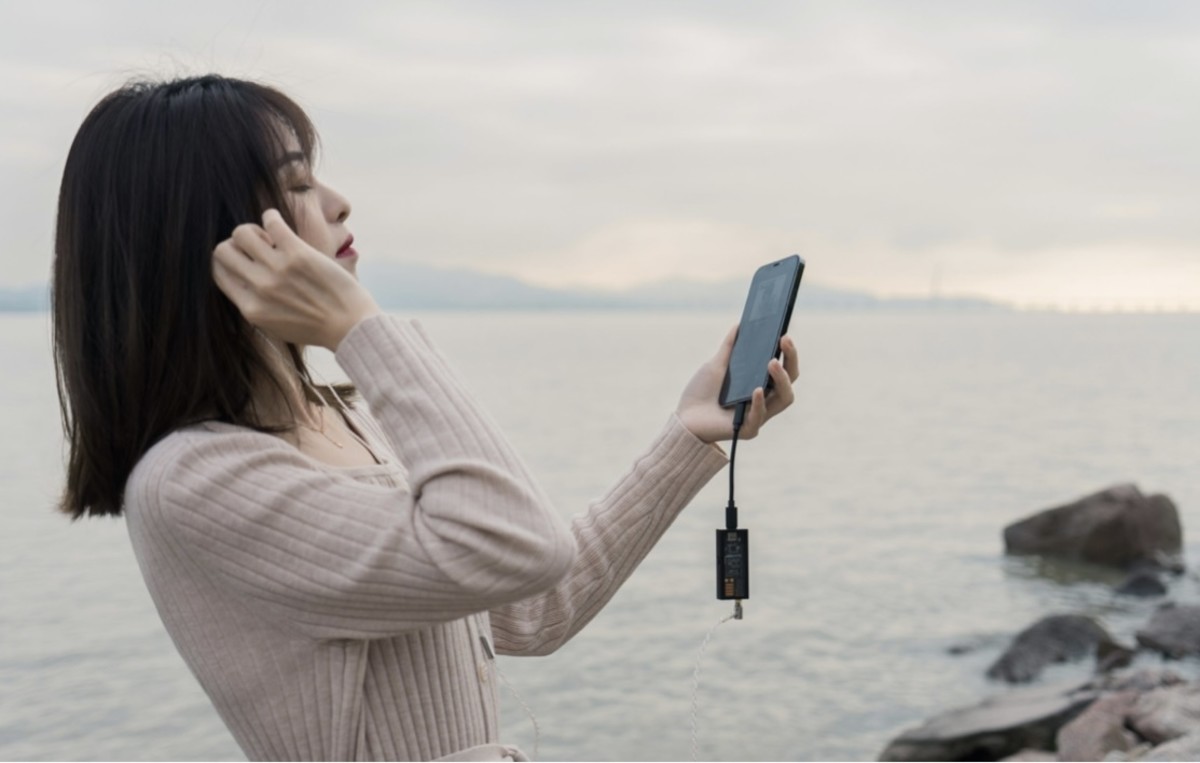Now a cellphone wasn’t originally created for the purpose of carrying music around, duh, but but today it’s probably the most obvious and expected method for listening to music when out and about. So the next question to ask is whether the cellphone is well-suited for a carrying music and the answer is yes — it has storage space for this purpose, so that’s over and done. But it’s not only about carrying music around, because that music has to be able to exit the phone and enter the ear (there being either a wired connection or a Bluetooth device procedure in place). So there has to be built into the phone the same tech as found in a home’s amplifier. Now it might sound obvious, extremely obvious, but the tech devoted to making the digital audio stored on the phone transfer over to the ears isn’t going to be favorably compared to a stand-alone amplifier. For one, there’s so many other things going on in that phone that there’s only so much “room” for the digital audio converter system.
What’s Needed Is Separate Audio Tech
So wouldn’t it be helpful if there was a separate DAC (digital audio converter) that could interface between a phone and the headphones/earbuds and take over the work that the phone just wasn’t up to? And can it be small enough not to make its presence too annoying to have to carry around? So yeah, that’s why you’re going to want to have the QUESTYLE M15 Mobile Lossless DAC with Headphone Amplifier be that interface. But first let’s deal with the annoying elephant in the audio room—low-resolution music files. If you’re thinking that small audio files mean you’re able to have more music ready to go, well you’re technically correct, only the quality of that music isn’t worth the trouble. GIGO means ‘garbage-in, garbage-out’ and there’s no need to improve the audio that you’ll be listening to if the audio quality isn’t there to begin with. So now on to the problem since the PSA about this is over….
The M15
The M15’s purpose is to improve upon the sound flowing from the audio source (being the smartphone for the most part) and into the headphones/earbuds of the user. It uses a 3.5mm input port and dual 3.5mm single ended and 4.4mm balanced output so one end goes to the headphones/earbuds, with the other end receiving the audio from the audio source’s output (in the case of a non 3.5mm available iPhone, it’s either an adapter or no-go). So that’s pretty much the physical end of things that are “user serviceable,” with a lot of tech packed into the small metal candy bar-like chassis, such as a high-end 32 bit DAC chip and output power that can handle real headphones. High rez PCM, DSD and MQA support of course, and high and low gain support for low and high powered headphones. And seeing the two LED lights is pretty easy because one side is clear for looking at the bits just mentioned as well as the rest of the circuitry.
You Will Hear the Difference
Now all the fancy talk and high end tech means little if you’re not hearing the difference between using it and not. Trust us, you will hear a difference: a level of clarity and blending of frequencies will erupt into a cornucopia of sound that should have been there from the start. And yes, you will be getting better headphones just because. The QUESTYLE M15 has a USB-C connector and fairly long battery life. It is a well-crafted piece of portable DAC tech whose presence is far from onerous, and whose performance is right up there with a home amplifier. Which means you can use it with your laptop or desktop just as nicely. This content reflects the personal opinions of the author. It is accurate and true to the best of the author’s knowledge and should not be substituted for impartial fact or advice in legal, political, or personal matters.




